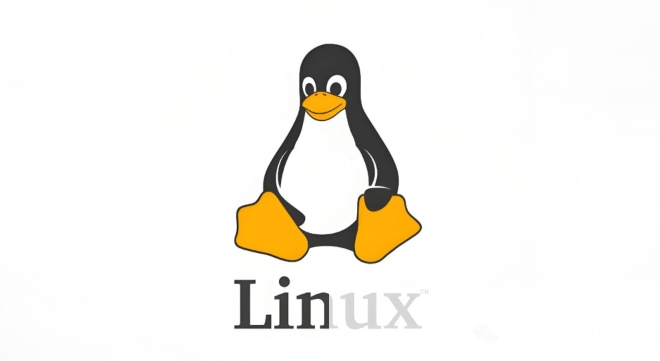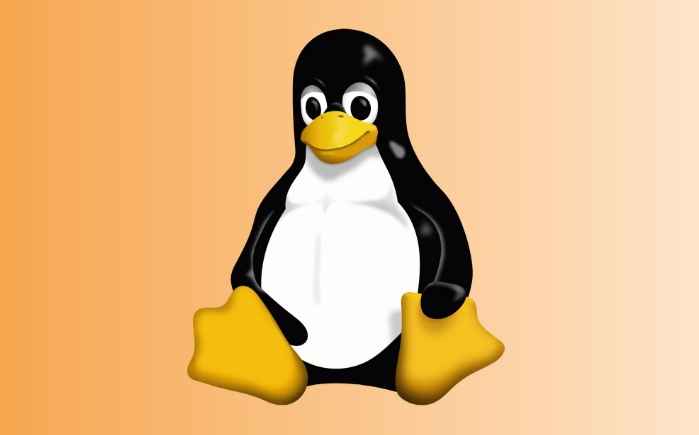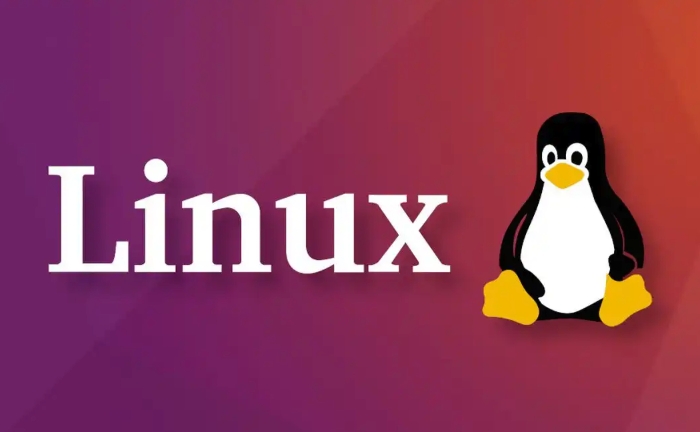What is the difference between Linux and Unix?
Jul 15, 2025 am 01:42 AMThe main differences between Linux and Unix are ownership, hardware compatibility, usage scenarios and support mode. 1. Ownership and License: Unix is mostly proprietary systems and needs to be used for a fee; Linux is open source and free. 2. Hardware compatibility: Unix usually binds to specific hardware platforms; Linux can run on multiple architectures. 3. Current uses: Unix is still used in enterprise-level mission-critical systems; Linux is widely used in cloud computing, embedded devices and personal projects. 4. Support method: Unix depends on vendor support; Linux has both community support and commercial support options. These differences are particularly significant in budgets, custom requirements, and infrastructure choices.

Linux and Unix are often mentioned in the same breath, especially when talking about servers, development environments, or open-source operating systems. But while they share a lot of similarities, there are some important differences to understand — especially if you're choosing between them for development, system administration, or learning purposes.

What Is Unix?
Unix is an operating system developed in the late 1960s and early 1970s at AT&T Bell Labs. It was designed to be a multiuser, multitasking OS that could run on different hardware platforms. Over time, Unix evolved into many commercial and proprietary variants like Solaris (from Sun/Oracle), AIX (IBM), and HP-UX (Hewlett-Packard).

These systems were typically used in enterprise environments, scientific computing, and high-end workstations. Unix has always had a report for being stable, secure, and powerful — but also expensive and limited to certain platforms.
What Is Linux?
Linux, on the other hand, started in 1991 as a free and open-source kernel created by Linus Torvalds. Today, when people say "Linux," they usually mean a full operating system built around that kernel, using tools from the GNU Project and other open-source components.

Unlike Unix, Linux distributions (or "distros") can be downloaded, modified, and used freely. Popular versions include Ubuntu, Fedora, Debian, and CentOS. Linux powers everything from personal desktops to Android phones to most of the internet's servers.
Key Differences Between Linux and Unix
Even though both Unix and Linux are command-line drive, POSIX-compliant, and used in similar environments, here are the main differences:
Ownership and Licensing :
Unix is typically proprietary, owned by companies like IBM, Oracle, or HP. You have to pay for it and use it under specific licensing terms.
Linux is open source and free (as in freedom and cost) — anyone can view, modify, and distribute its source code.Hardware Compatibility :
Unix was historically tied to specific hardware (like SPARC or POWER processors).
Linux runs on a wide variety of architectures, including x86, ARM, MIPS, and more. It's much easier to install and customize across devices.Usage Today :
Unix systems are still used in large enterprises, especially where legacy systems are involved. They're known for rock-solid stability and support.
Linux dominates in cloud computing, web hosting, embedded systems, and personal/open-source projects.Community vs. Commercial Support :
Most Unix systems come with official vendor support.
Linux gets support from both community forums and paid vendors (like Red Hat or Canonical), giving users more flexible options.
When Does the Difference Matter?
If you're just starting out or working on general-purpose computing tasks, the distinction might not matter much — the commands, tools, and interfaces are very similar.
But in professional settings, it can affect:
- Your budget (Unix licenses can be costly)
- Your flexibility (Linux allows deeper customization)
- Your infrastructure needs (some industries still rely on Unix-based systems)
So, while Linux borrowed heavily from Unix design principles, the two have diverged in philosophy, accessibility, and deployment models.
Basically that's it.
The above is the detailed content of What is the difference between Linux and Unix?. For more information, please follow other related articles on the PHP Chinese website!

Hot AI Tools

Undress AI Tool
Undress images for free

Undresser.AI Undress
AI-powered app for creating realistic nude photos

AI Clothes Remover
Online AI tool for removing clothes from photos.

Clothoff.io
AI clothes remover

Video Face Swap
Swap faces in any video effortlessly with our completely free AI face swap tool!

Hot Article

Hot Tools

Notepad++7.3.1
Easy-to-use and free code editor

SublimeText3 Chinese version
Chinese version, very easy to use

Zend Studio 13.0.1
Powerful PHP integrated development environment

Dreamweaver CS6
Visual web development tools

SublimeText3 Mac version
God-level code editing software (SublimeText3)
 How does the cost of ownership differ between Linux and Windows?
Jun 09, 2025 am 12:17 AM
How does the cost of ownership differ between Linux and Windows?
Jun 09, 2025 am 12:17 AM
Linux's cost of ownership is usually lower than Windows. 1) Linux does not require license fees, saving a lot of costs, while Windows requires purchasing a license. 2) Linux has low hardware requirements and can extend the service life of the device. 3) The Linux community provides free support to reduce maintenance costs. 4) Linux is highly secure and reduces productivity losses. 5) The Linux learning curve is steep, but Windows is easier to use. The choice should be based on specific needs and budget.
 How to install Linux alongside Windows (dual boot)?
Jun 18, 2025 am 12:19 AM
How to install Linux alongside Windows (dual boot)?
Jun 18, 2025 am 12:19 AM
The key to installing dual systems in Linux and Windows is partitioning and boot settings. 1. Preparation includes backing up data and compressing existing partitions to make space; 2. Use Ventoy or Rufus to make Linux boot USB disk, recommend Ubuntu; 3. Select "Coexist with other systems" or manually partition during installation (/at least 20GB, /home remaining space, swap optional); 4. Check the installation of third-party drivers to avoid hardware problems; 5. If you do not enter the Grub boot menu after installation, you can use boot-repair to repair the boot or adjust the BIOS startup sequence. As long as the steps are clear and the operation is done properly, the whole process is not complicated.
 How to enable the EPEL (Extra Packages for Enterprise Linux) repository?
Jun 17, 2025 am 09:15 AM
How to enable the EPEL (Extra Packages for Enterprise Linux) repository?
Jun 17, 2025 am 09:15 AM
The key to enabling EPEL repository is to select the correct installation method according to the system version. First, confirm the system type and version, and use the command cat/etc/os-release to obtain information; second, enable EPEL through dnfinstallepel-release on CentOS/RockyLinux, and the 8 and 9 version commands are the same; third, you need to manually download the corresponding version of the .repo file and install it on RHEL; fourth, you can re-import the GPG key when encountering problems. Note that the old version may not be supported, and you can also consider enabling epel-next to obtain the test package. After completing the above steps, use dnfrepolist to verify that the EPEL repository is successfully added.
 How to choose a Linux distro for a beginner?
Jun 19, 2025 am 12:09 AM
How to choose a Linux distro for a beginner?
Jun 19, 2025 am 12:09 AM
Newbie users should first clarify their usage requirements when choosing a Linux distribution. 1. Choose Ubuntu or LinuxMint for daily use; programming and development are suitable for Manjaro or Fedora; use Lubuntu and other lightweight systems for old devices; recommend CentOSStream or Debian to learn the underlying principles. 2. Stability is preferred for UbuntuLTS or Debian; you can choose Arch or Manjaro to pursue new features. 3. In terms of community support, Ubuntu and LinuxMint are rich in resources, and Arch documents are technically oriented. 4. In terms of installation difficulty, Ubuntu and LinuxMint are relatively simple, and Arch is suitable for those with basic needs. It is recommended to try it first and then decide.
 How to add a new disk to Linux
Jun 27, 2025 am 12:15 AM
How to add a new disk to Linux
Jun 27, 2025 am 12:15 AM
The steps to add a new hard disk to the Linux system are as follows: 1. Confirm that the hard disk is recognized and use lsblk or fdisk-l to check; 2. Use fdisk or parted partitions, such as fdisk/dev/sdb and create and save; 3. Format the partition to a file system, such as mkfs.ext4/dev/sdb1; 4. Use the mount command for temporary mounts, such as mount/dev/sdb1/mnt/data; 5. Modify /etc/fstab to achieve automatic mount on the computer, and test the mount first to ensure correctness. Be sure to confirm data security before operation to avoid hardware connection problems.
 Fixed the failure to upload files in Windows Google Chrome
Jul 08, 2025 pm 02:33 PM
Fixed the failure to upload files in Windows Google Chrome
Jul 08, 2025 pm 02:33 PM
Have problems uploading files in Google Chrome? This may be annoying, right? Whether you are attaching documents to emails, sharing images on social media, or submitting important files for work or school, a smooth file upload process is crucial. So, it can be frustrating if your file uploads continue to fail in Chrome on Windows PC. If you're not ready to give up your favorite browser, here are some tips for fixes that can't upload files on Windows Google Chrome 1. Start with Universal Repair Before we learn about any advanced troubleshooting tips, it's best to try some of the basic solutions mentioned below. Troubleshooting Internet connection issues: Internet connection
 Where are system logs located in Linux?
Jun 24, 2025 am 12:15 AM
Where are system logs located in Linux?
Jun 24, 2025 am 12:15 AM
Logs in Linux systems are usually stored in the /var/log directory, which contains a variety of key log files, such as syslog or messages (record system logs), auth.log (record authentication events), kern.log (record kernel messages), dpkg.log or yum.log (record package operations), boot.log (record startup information); log content can be viewed through cat, tail-f or journalctl commands; application logs are often located in subdirectories under /var/log, such as Apache's apache2 or httpd directory, MySQL log files, etc.; at the same time, it is necessary to note that log permissions usually require s
 What is the sudo command and when should I use it?
Jul 02, 2025 am 12:20 AM
What is the sudo command and when should I use it?
Jul 02, 2025 am 12:20 AM
sudo stands for "substituteuserdo" or "superuserdo", allowing users to run commands with permissions of other users (usually root). Its core uses include: 1. Perform system-level operations such as installing software or editing system files; 2. Accessing protected directories or logs; 3. Manage services such as restarting nginx; 4. Modify global settings such as /etc/hosts. When using it, the system will check the /etc/sudoers configuration and verify the user password, provide temporary permissions instead of continuously logging in as root, ensuring security. Best practices include: only when necessary, avoid blindly executing network commands, editing sudoers files with visudo, and considering continuous operations.






